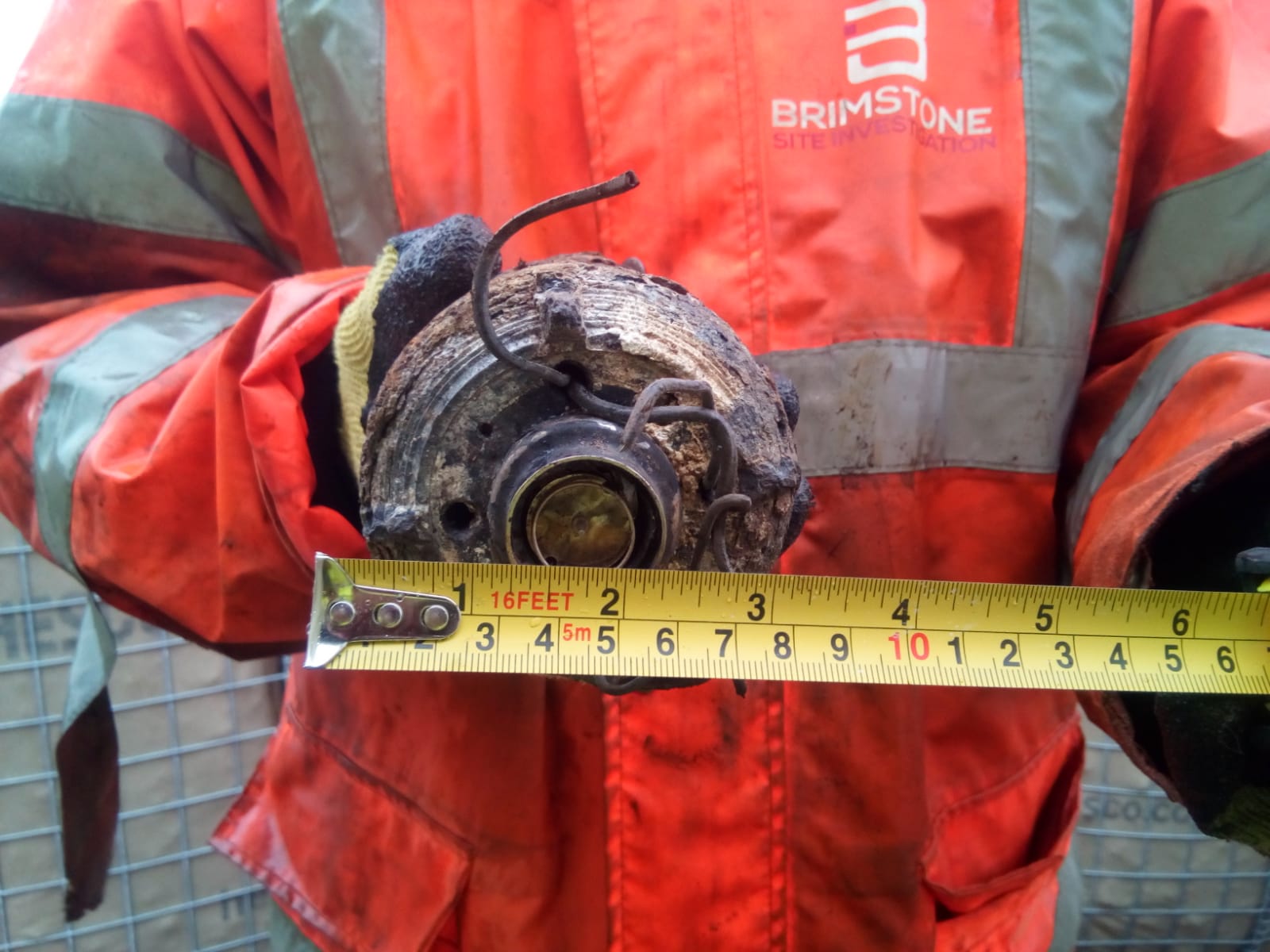Brimstone EOD Engineers encounter a WWII Anti-Aircraft Rocket
Since 2018, a Brimstone team have been surveying and removing UXO from a site in Staffordshire. This residential development site has yielded a variety of UXO.
The latest find is one of the more unusual types of UXO, a British 3 inch Unrotated Projectile (UP) rocket!

The history behind unrotated projectile rockets
This projectile is part of a historic anti-aircraft (AA) weapons system that saw limited action both on land and with Royal Navy warships, although the latter utilised a larger 7 inch variant. The land UP variant armed the Z Batteries which defended a number of British cities between 1941 and 1945. Each battery comprised up to 64 individual rocket projectors.
The land variant came in 2 inch and 3 inch calibres. There were also two types of payload, high explosive fragmentation or miniature parachute mine. Unexploded examples of the latter were known colloquially as Small Yellow Bombs.
Only the top two pieces of the whole rocket were found, the pointed nose and the high explosive charge. The longer rocket engine and tail section fins were not present.
The term Unrotated Projectile came about due to AA rocketry being in its infancy. One of the main differences between the new UPs and traditional AA guns was the fact that the rockets were not spin-stabilised like projectiles fired from a rifled gun barrel. They were fin-stabilised instead.

Mitigating UXO risks
British UXO finds such as this highlight the need to ensure UXO risk is considered at an early stage in any development. The greatest chance of identifying historic military activity is by commissioning a Brimstone Stage 1 Preliminary UXO Risk Assessment.
Keep up to date with Brimstone UXO by following us on Facebook, Instagram, Twitter, LinkedIn and YouTube.